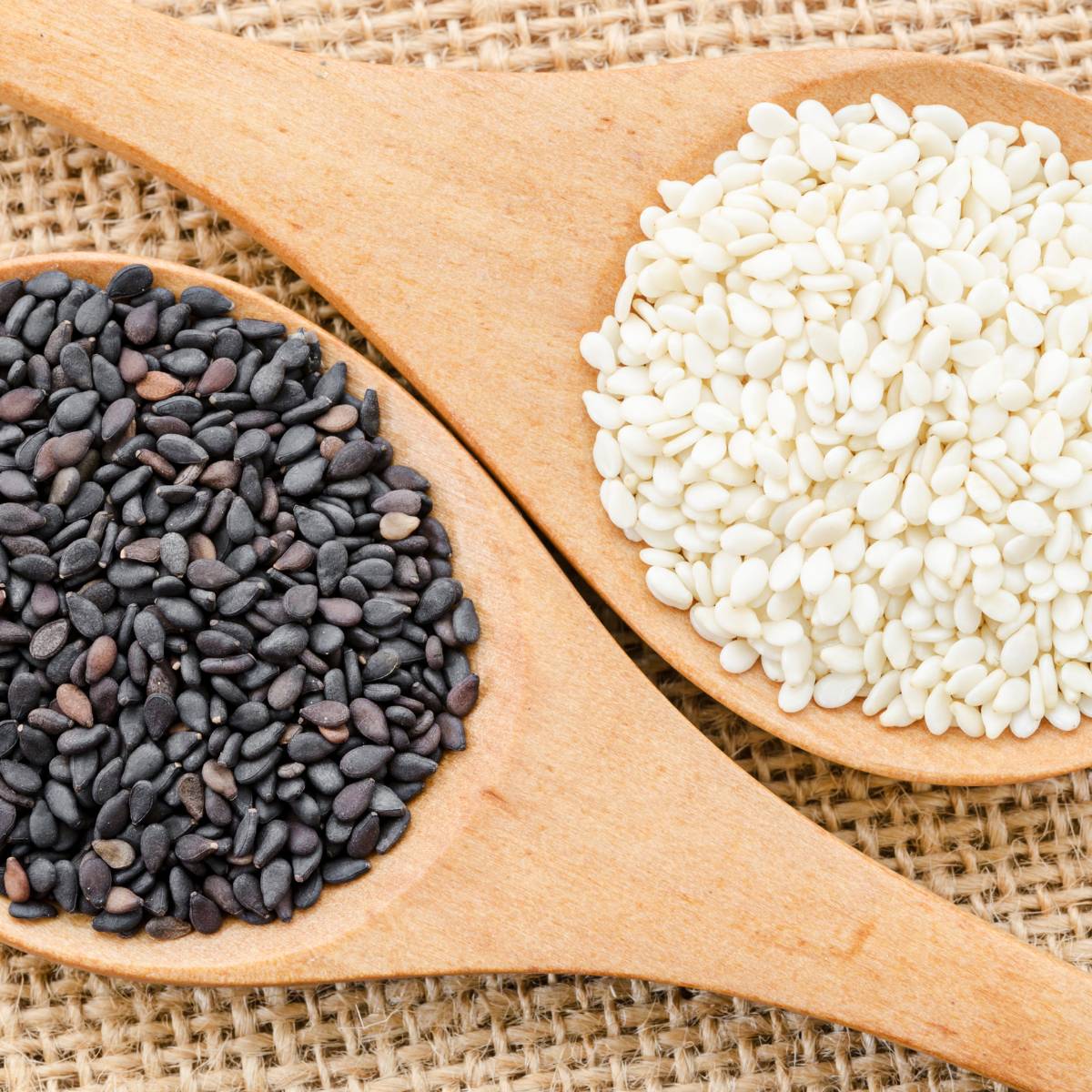Sesame seeds, tiny marvels packed with nutrition, have been an integral part of culinary traditions around the globe for centuries. Among the various varieties, white and black sesame seeds stand out as popular choices, each bringing its unique flavor, color, and nutritional profile to the table. In this exploration, we delve into the captivating world of sesame seeds, unraveling the differences between the white and black varieties that add depth and character to a multitude of dishes.
Origins and Cultivation:
Sesame seeds, scientifically known as Sesamum indicum, have origins rooted in Africa and India. White and black sesame seeds come from the same plant, but their distinct characteristics arise from differences in cultivation, processing, and regional variations.
White Sesame Seeds:
- Appearance and Flavor: White sesame seeds, the more common variety, boast a light, ivory hue. Their neutral color makes them a versatile addition to both sweet and savory dishes. Mild and nutty in flavor, white sesame seeds are often used as a garnish or ingredient in a range of cuisines, from Asian stir-fries to Middle Eastern tahini.
- Culinary Uses: White sesame seeds are frequently sprinkled on bread, salads, and sushi, enhancing visual appeal while providing a subtle crunch. They are a key component in the production of sesame oil, a staple in Asian cooking. Additionally, white sesame seeds are prominently featured in confectioneries and desserts, such as sesame brittle and sesame seed bars.
- Nutritional Content: Nutritionally, white sesame seeds are rich in healthy fats, protein, and essential minerals like calcium, magnesium, and phosphorus. They also contain antioxidants, contributing to overall well-being.
Black Sesame Seeds:
- Appearance and Flavor: In contrast, black sesame seeds are distinguished by their deep, dark hue, ranging from charcoal to obsidian. This dramatic color imparts a bold visual contrast to dishes, making black sesame seeds a popular choice for both culinary and aesthetic purposes. Their flavor is more robust and earthy compared to their white counterparts, lending a slightly bitter note.
- Culinary Uses: Black sesame seeds are prevalent in Asian cuisine, particularly in Japan and China, where they are used to adorn sushi, steamed buns, and desserts. They are a key ingredient in black sesame paste, a velvety, rich concoction often used in sweets like black sesame soup and glutinous rice balls.
- Nutritional Content: While black sesame seeds share many nutritional benefits with their white counterparts, they are renowned for their higher content of certain nutrients. Black sesame seeds are particularly rich in iron, zinc, and fiber, making them a noteworthy addition to a balanced diet.

Health Benefits:
Both white and black sesame seeds offer a range of health benefits, contributing to overall well-being:
- Cardiovascular Health: Sesame seeds, in general, contain heart-healthy fats, such as monounsaturated and polyunsaturated fats. They also boast lignans and phytosterols, compounds associated with lowering cholesterol levels and promoting cardiovascular health.
- Bone Health: White sesame seeds, with their calcium and phosphorus content, contribute to bone health and may help prevent osteoporosis. Black sesame seeds, with their higher mineral content, further support bone strength.
- Antioxidant Properties: Both varieties of sesame seeds contain antioxidants, such as sesamol and sesamin, which help neutralize free radicals in the body. These antioxidants contribute to cellular health and may play a role in reducing the risk of chronic diseases.
Culinary Trends and Aesthetic Appeal:
The choice between white and black sesame seeds often extends beyond flavor and nutrition; it also involves the visual impact of the dishes they adorn. Chefs and home cooks alike leverage the contrasting colors to create visually stunning presentations, adding a touch of sophistication to a wide array of foods.
In recent years, the popularity of black sesame seeds has surged, with chefs experimenting with their use in both traditional and modern dishes. The deep, mysterious hue of black sesame seeds lends itself well to the aesthetics of social media, where visually appealing dishes are often celebrated.
Conclusion:
In the grand tapestry of culinary exploration, white and black sesame seeds stand as testament to the diversity and richness of flavors available to us. Whether delicately sprinkled on a salad or incorporated into a decadent dessert, these tiny seeds contribute not only to taste and texture but also to the nutritional value of our meals.
As we savor the unique attributes of white and black sesame seeds, it becomes clear that their differences extend far beyond their appearances. Each variety brings its own set of flavors, aromas, and health benefits to the table, encouraging us to appreciate the nuanced beauty of these unassuming seeds that have graced our plates for centuries.
Ajigofarms is a reliable global agricultural purchase sourcing with profound expertise in the manufacturing, and exportation of food crops. We are tested, and trusted suppliers of all kinds of cash crops and food crops. Our constant supply chain solution makes exporting easy, quick, and safe, we are identified with timeliness and meeting up with deadlines. Regardless of the region you are located in worldwide, you can reliably order your Agric products and be rest assured of successful delivery.




